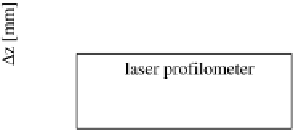Graphics Reference
In-Depth Information
Fig. 6.17
Cross sections of the raw forged iron surface of the connection rod, compared to ground
truth (RMSE in mm), obtained with the SfPR and the shape from shading approach (SfS), no
stereo information, initialisation with zero surface gradients, albedo estimated based on specular
reflections according to (
5.23
)
Fig. 6.18
Cross sections of the raw forged iron surface of the connection rod, compared to ground
truth (RMSE in mm). SfPR and shape from shading approach (SfS), no stereo information, initiali-
sation with surface gradients obtained by depth from defocus, albedo estimated based on all image
pixels according to (
5.24
)
ents set to
p
DfD
uv
and
q
DfD
uv
and was kept constant during the iteration process. Cross
sections extracted from the corresponding reconstructed surface profiles and their
comparison to ground truth are shown in Fig.
6.18
. The RMSE values are 64
μ
m
for the SfPR approach and 720
m for the shape from shading approach. The shape
from shading approach again does not correctly estimate the surface gradients per-
pendicular to the direction of incident light, which results in a large RMSE value.
Including polarisation information yields largely the same result as obtained with
the albedo estimated from specular reflections, but without requiring the presence
of specular reflections in the image.
For the flange, as shown in Fig.
6.19
a, the global SfPR approach was initialised
with zero surface gradients, and the uniform surface albedo
ρ
0
was determined ac-
μ






























































































































































































































































































Search WWH ::

Custom Search